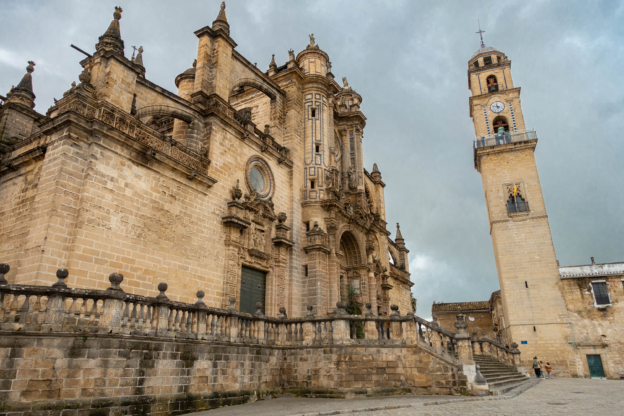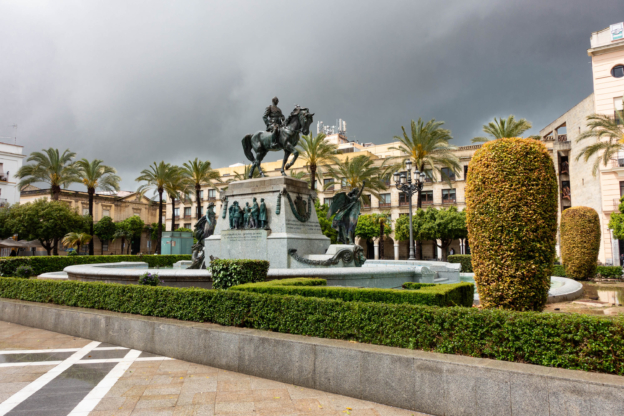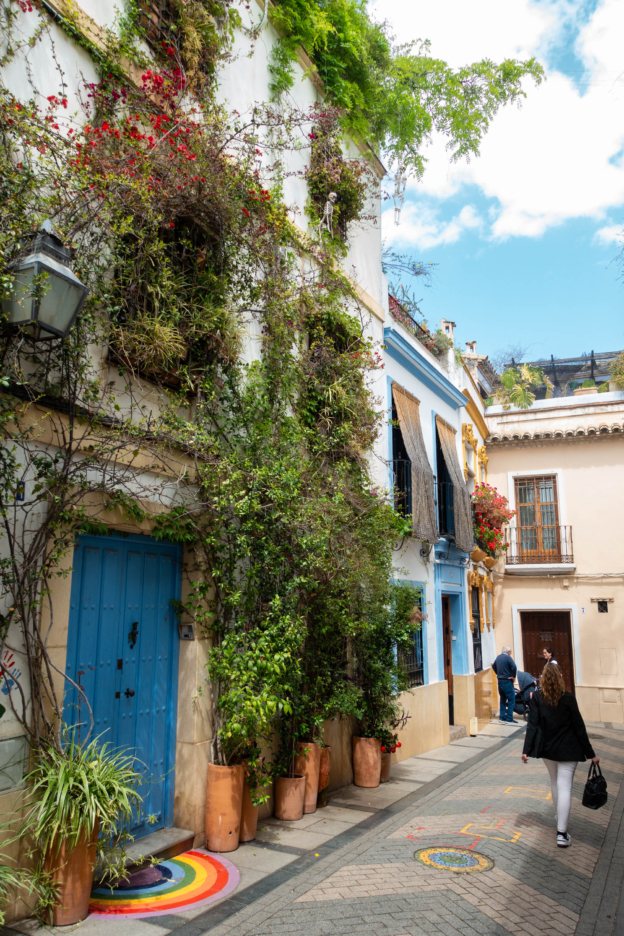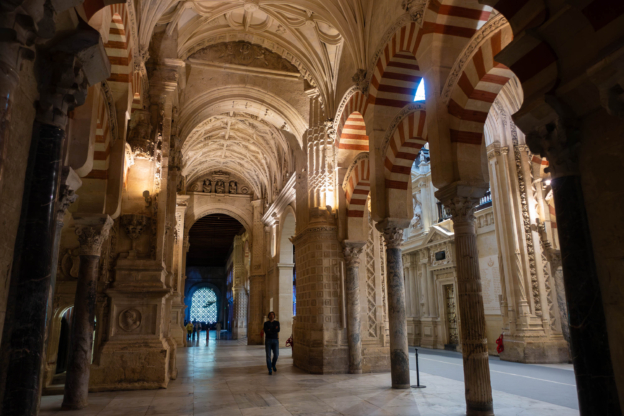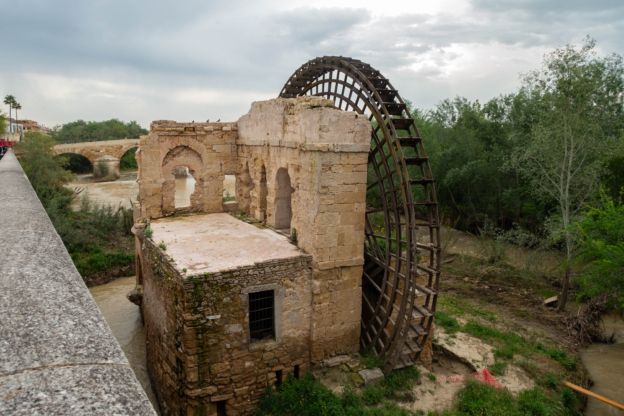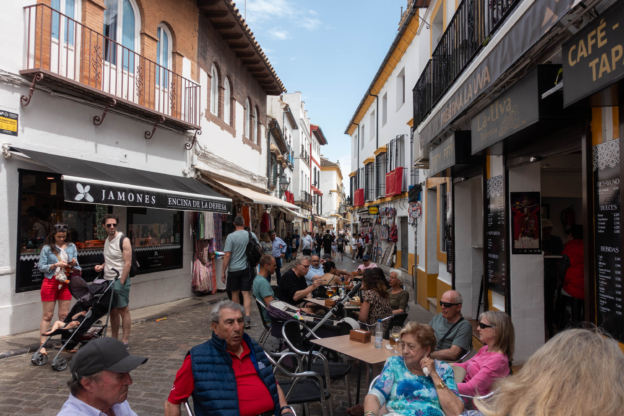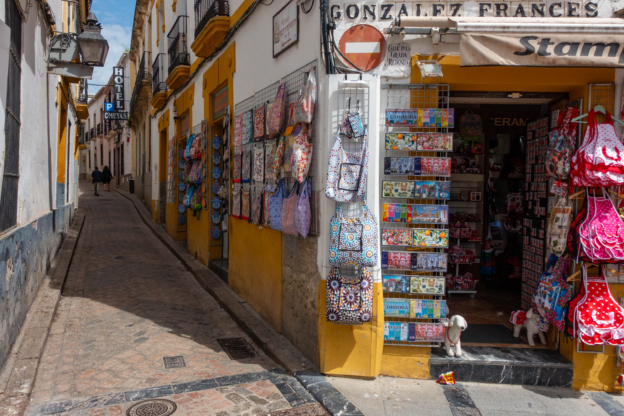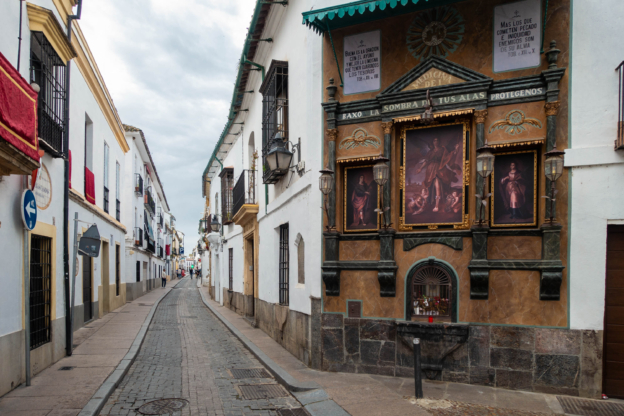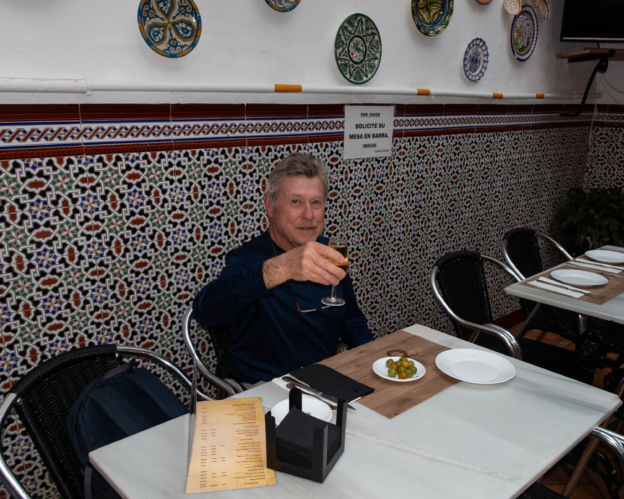All Photos Are Below the Travelogue Text
Click on Any Photo To Open Slide Show
To print the travelogue, right click anywhere on the page. Choose "Print" from your browser dialog box. You can choose Save to PDF in the browser print window.
Share your thoughts.
Email Dave - coxdavid55@hotmail.com
I took a local bus from Sanlucar on the Atlantic to Jerez, the town which originated and gave its name to the fortified wine known as sherry. It is a pretty town with a wonderful cathedral and Alcazar (fort). I last spent some time at one of the tabancos (sherry houses) with the owner who spent a great deal of time explaining to me how all the various types of sherry are produced (these include “fino”, “oloroso” and “Pedro Ximenez” among others). Personally, I have found I prefer the dry fino of Cordoba, which cannot be called a sherry because it is not produced in the township of Jerez (similar to permitting the names “Tequila” or “Cognac” only for that produced in the region).
I took the train from Jerez to Cordoba, an Alvia train which “only” travels at 275 kph rather than 320 kph as does the Ave (for the metrically challenged that is only 170 mph). I have written many times over the years about Cordoba, which for a time challenged Mecca as the most important holy city of Islam in the 9th to 12th Centuries. The great mosque, the “Mezquita”, at its current size covers almost 6 acres, and, of course, is a World Heritage Site. As I have written much in the past, I will not repeat here the many attractions of Cordoba. I did, as usual, eat a number of plates of Berenjenas a la Cordobesa, deep fried thin slices of eggplant drizzled with honey; I also ordered many times the famous local Salmorejo Cordobes, a cold tomato, bread, garlic and olive oil mix blended into a thick consistency and garnished with hard-boiled egg and bacon crumbles.
My last report included two photos of me seated with refreshment – one with a local red wine and the other with a Spanish beer. The attached photos below include yet another such pic, but this one with the Cordoban fino – just so you know the photos are varied.
As I on this trip have been doing less photography and tourist site visits, I have made it a “reading” trip. I started with Cervantes’ “Don Quixote”, translated to English in the 19th century by Ormsby (considered by scholars as the most faithful translation, and by me as the best because the use of 19th century scholarly English I think best captures the scholarly old Spanish of Cervantes). I have finished Part 1, and am halfway through Part 2; I find the first more enjoyable and much funnier – the second is drier and seems to me a little more plodding. All in all, the book is one of the longest and most widely read and translated classics in existence. I checked an online source (reliability uncertain) where the claim is the book only is about 20% shorter than War and Peace, perhaps the longest classic ever. Anyway, a number of the stories had me laughing out loud. Sancho telling the story of the shepherd trying to cross the river still makes me chuckle every time I think of it.
I also have just finished reading a translation of “Lazarillo de Tormes”, author unknown, published about 40 years before Don Quixote and referenced by Cervantes. Lazarillo is from Salamanca where the story begins, and has a famous scene at the huge carved rock bull (a “veraco”, one of pre-Roman stone carvings found in central Spain) which still stands at the beginning of the Roman bridge over the Tormes River. Lazarillo perhaps is the second best known ancient Spanish novel, much shorter than Don Quixote, and the writing set the design for “picaresque” novels where the protagonists basically are lovable scoundrels (Huckleberry Finn is such a work).
Finally, I also brought Hemingway’s “The Sun Also Rises” to read a second time when, and if, I go to Pamplona, where Hemingway wrote much of the book sitting in the Café Iruna where I also like to sit and drink beer on the main plaza. I am reading also crime and sci fi novels but they do not relate to my travels.
I now am in Salamanca spending 2 weeks in a lovely 2-bedroom apartment, with 6 glass doors opening onto balconies over the Plaza Sesmeros and the 12th century church San Julian & Santa Basilisa. The weather for two days has been almost freezing, with on and off sleet or small hail showers and high winds – the reports say it should start clearing today and get warmer and more spring like. Later. Dave
- Catedral, Jerez, Spain
- Plaza Arenal under approaching storm squalls, Jerez, Spain
- Iglesia de San Miguel 16th-18th C, Jerez, Spain
- street scene E of Mezquite, Cordoba, Spain
- Start of Catedral inside Mezquite, Cordoba, Spain
- Albolafia Mill, scene walking W along Rio Guadalquiver, Cordaba, Spain
- street scene Jewish Quarter, Cordoba, Spain
- street scene E of Mezqite, Cordoba, Spain
- scene in Jewish Quarter, Cordoba, Spain
- David with Cordoba fino, inside Taberna Plateros Sociedades, Cordoba, Spain
To print the travelogue, right click anywhere on the page. Choose "Print" from your browser dialog box. You can choose Save to PDF in the browser print window.
Share your thoughts.
Email Dave - coxdavid55@hotmail.com
